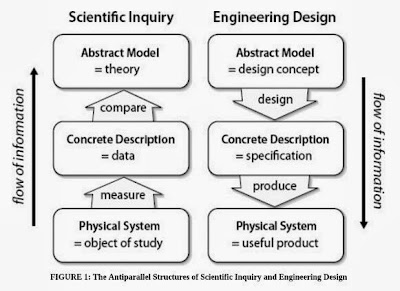Philosophy of Engineering
As a kid getting
ready to go to engineering college, I am ashamed to say I barely knew the
difference between science and technology (engineering) back then (they don’t
ask such questions in the IIT-JEE exam). It took me a few years of being at
work to finally get the difference.
Or so I thought.
Well ok, I was right about the parts I knew but turns out there are other
aspects as well.
I learnt all
this after reading a few excerpts from the book, Radical
Abundance, by Eric Drexler. First the part I already knew:
“Scientific inquiry expands the scope of
human perception and understanding; engineering design expands the scope of
human plans and results.”
Ok, that’s it:
that’s all I knew. Drexler goes on to point out that in real life, the two
fields often mix:
“Engineering new instruments enables
inquiry, while scientific inquiry can enable design.”
and it is
because of this intertwining of the two which can often “obscure how deeply they differ.”
So what is this
deep difference between the two? The short answer is that when it comes to their
orientation to the flow of information, science is bottom-up whereas
engineering is top-down. A pic would make this clearer:
This difference
becomes obvious when one looks at how the two deal with the unknown:
“Scientific inquiry faces toward the unknown,
and this shapes the structure of scientific thought; although scientists apply
established knowledge, the purpose of science demands that they look beyond it.
Engineering design, by contrast, shuns
the unknown. In their work, engineers seek established knowledge and apply it
in hopes of avoiding surprises. In engineering, the fewer experiments, the
better.”
You’d think I’d
be embarrassed to not know these things already. But you’d be wrong. So what’s
my excuse? It’s what Drexler says about engineering:
“Engineers can design systems that are
beyond their full comprehension.”
Not knowing is
the mark of an engineer, so there!

Comments
Post a Comment